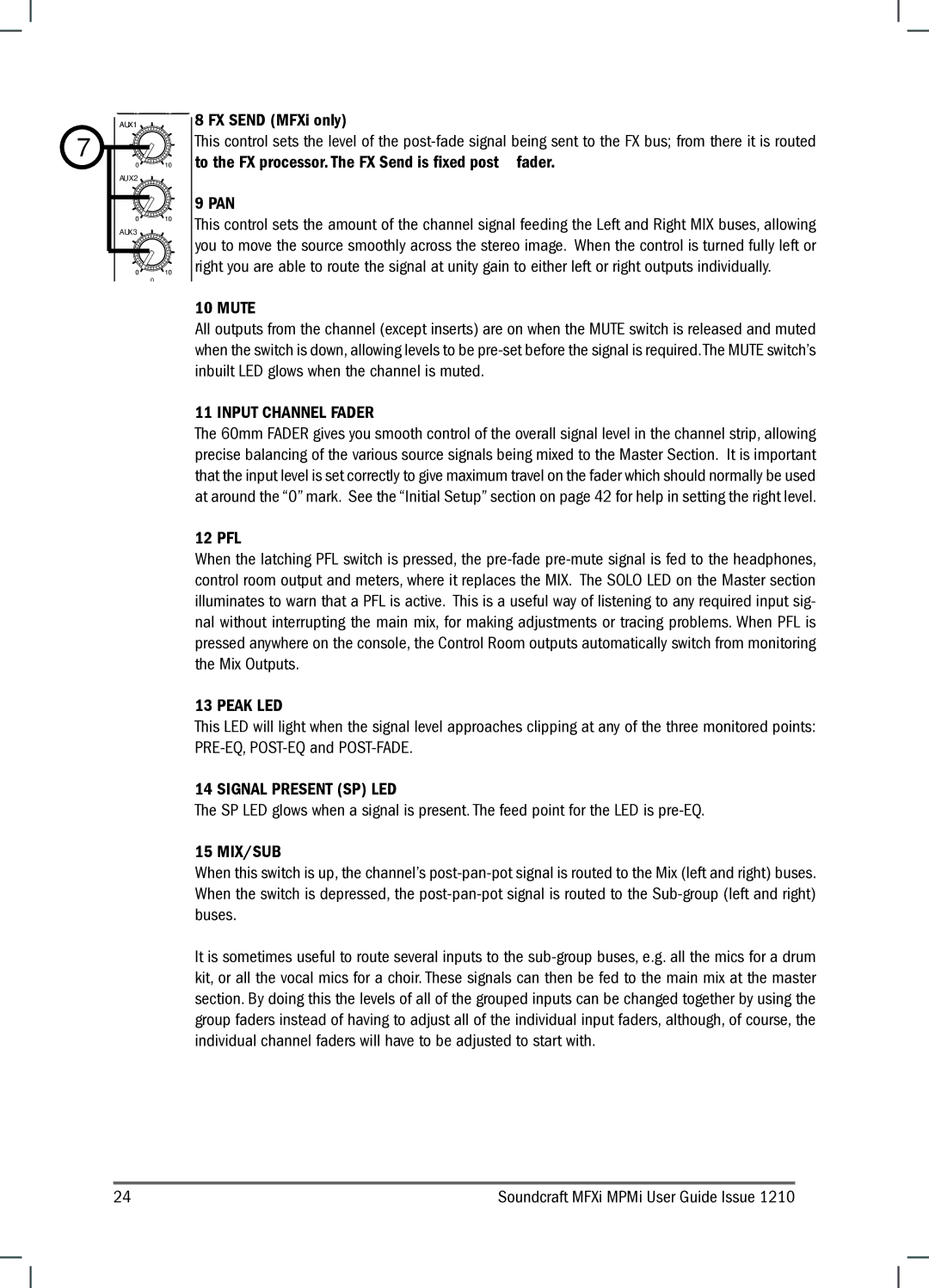
7
AUX1 ![]()
0![]()
![]() 10
10
AUX2 ![]()
0![]()
![]() 10
10
AUX3 ![]()
0![]()
![]() 10
10
0
8 FX SEND (MFXi only)
This control sets the level of the
9 PAN
This control sets the amount of the channel signal feeding the Left and Right MIX buses, allowing you to move the source smoothly across the stereo image. When the control is turned fully left or right you are able to route the signal at unity gain to either left or right outputs individually.
10 MUTE
All outputs from the channel (except inserts) are on when the MUTE switch is released and muted when the switch is down, allowing levels to be
11 INPUT CHANNEL FADER
The 60mm FADER gives you smooth control of the overall signal level in the channel strip, allowing precise balancing of the various source signals being mixed to the Master Section. It is important that the input level is set correctly to give maximum travel on the fader which should normally be used at around the “0” mark. See the “Initial Setup” section on page 42 for help in setting the right level.
12 PFL
When the latching PFL switch is pressed, the
13 PEAK LED
This LED will light when the signal level approaches clipping at any of the three monitored points:
14 SIGNAL PRESENT (SP) LED
The SP LED glows when a signal is present. The feed point for the LED is
15 MIX/SUB
When this switch is up, the channel’s
It is sometimes useful to route several inputs to the
24 | Soundcraft MFXi MPMi User Guide Issue 1210 |
